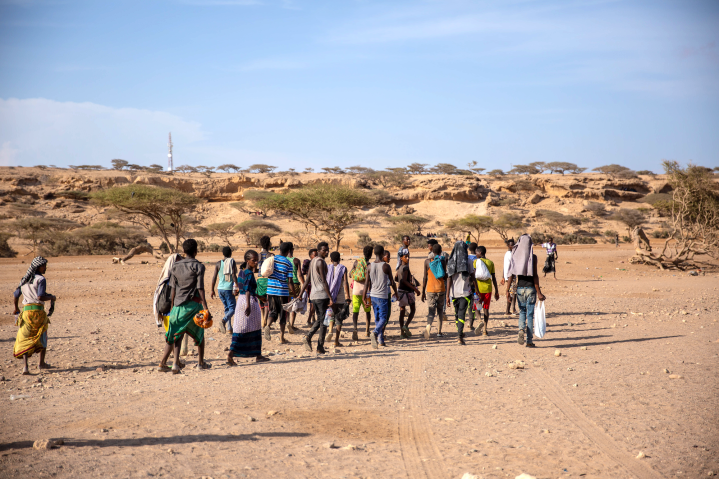ISS TODAY OP-ED
Growing mixed migration crisis in East Africa fuelled by lack of political goodwill and consensus

A common approach would not only protect the rights of migrants and refugees but also strengthen regional economies and security.
Rising refugee numbers, irregular migration and forced displacement compound East Africa’s complex security and development challenges. The transregional nature of mixed migration means that individual countries cannot tackle the issue alone. And while the region has adopted many progressive migration policies, countries still struggle to manage migrants and refugees.
The dynamics of mixed migration in East Africa are constantly evolving as the underlying causes and needs of migrants change. East Africa accounts for 30% of the continent’s total migrant population of 26.6 million, with economic migrants and refugees making up three-quarters of those on the move.
By the end of 2022, over 70% of refugees in Africa were in East Africa and the Great Lakes. That number has risen considerably this year due to the conflict in Sudan.
In the seven-member East African Community (EAC), migration (particularly forced displacement due to violent conflict and climate disasters) is a significant issue of national interest. The region has a myriad of policies and initiatives on mixed migration.
Member states have ratified the EAC Common Market Protocol to enable cooperation on migration. This provides for the free and safe movement of migrants within the region, which offers economic benefits to both migrants and member countries. The Protocol also allows refugees from EAC member states to relinquish their status and adopt the new EAC citizenship.
EAC member states are aligning their national migration policies with regional and global frameworks such as the Global Compact for Migration and the African Union (AU) Migration Policy Framework. There are also efforts to harmonise policies within countries.
But despite these many efforts, the region still struggles to manage migrant and refugee concerns, for several reasons.
Economic challenges faced
The rate of domestication, harmonisation and implementation of global, continental, and regional policies varies among countries. It has also been difficult to get all member states to agree on how to deal with refugees, which creates incoherence in the governance of migration and forced displacement.
Many East African countries are fragile states with struggling economies. They lack resources to manage the diverse needs of refugees and migrants, especially when these needs are evaluated against those of the host country’s population. As a result, many host countries have encampment policies to handle prolonged refugee situations. Refugee encampment hinders the livelihoods of refugees and their ability to become self-reliant.
Refugees also have limited access to social and economic opportunities. This is partly because the EAC Common Market Protocol does not cover refugees from non-EAC states. Most countries in the region also lack specific national laws and policies that align with regional migration frameworks.
Lessons can be taken from Kenya’s 2021 Refugee Act, which promotes refugees’ social and economic rights. If effectively implemented, it could be a game-changer for the country and others in the region.
Initiatives like the recently established EAC Regional Consultative Process on Migration could improve consensus and cooperation on migration and forced displacement. The process is an excellent way to reach agreement on migration governance and draw up action plans.
Still, the varying ability of East African states to manage mixed migration and their lack of political goodwill to coordinate on refugee issues could frustrate the process. Another challenge is increased human trafficking and irregular migration along the Eastern Route via Yemen and Saudi Arabia to Europe. Some of the busiest irregular migration corridors in Africa are in East Africa, where international networks are most active.
Nevertheless, the economic and security opportunities for the region if this process succeeds are immense, particularly regarding protracted refugee situations. DM
James Owino, Consultant, Migration, Institute for Security Studies (ISS) Pretoria.
Research for this article was funded by the government of the Netherlands.
First published by ISS Today.




















 Become an Insider
Become an Insider
Comments - Please login in order to comment.